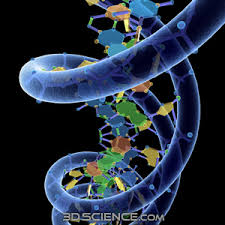Fortunately, mobile connectivity has improved dramatically in the last several years. Whether you are using Wi-Fi or Ethernet, you have many options to choose from.
Hotel Internet
Where hotels used to offer only "data ports" into which you plugged your modem, it's common today for there to be high speed internet or Wi-Fi for no additional charge.
When the internet works, it's a great thing, but sometimes it can be quite spotty. Problems include authentication and wireless access points which are too far away to reach your room. Probably the worst, however, are those systems that intercept all outgoing mail, route it through their server and then restrict the number of outgoing messages you can send in a day. For email driven or business lifestyles, this is unacceptable.
Wi-Fi Hotspots
Hotspots which offer Wi-Fi are everywhere if you have a wireless-capable device. If you have an account with AT&T, for example, you have access to thousands of hotspots across the country, usually in a Starbucks. The convenient thing with these accounts is that you may not have to sign up for a plan; you can usually pay for a day or week's worth of access. Of course, if you plan on using these networks regularly, the plans are more cost effective. If you just have a "connectivity emergency" though, a 24 hours pass can really save the day.
Hotspots are not limited to Starbucks, however. You can quite often find them at libraries, sometimes shopping malls, government facilities and more. Online resources are available to help you find free hotspots. Just search for "free hotspot directory" to find several. Don't limit yourself though; many times these directories are out of date, so continue to check for new hotspots.
Cellular
For the seriously addicted or just serious internet user, cellular technology has recently gotten to the point of being usable and may prove to provide the most flexible option of all. Most major carriers now have high-speed internet options that have much improved coverage and connectivity.
A very popular option is the USB cellular modem. These devices plug into your laptop and provide a high-speed cellular broadband connection, often at speeds approaching home DSL, depending on the cellular coverage.
Unfortunately the cellular approach has a cost. It's best to think of this as signing up with a second ISP - your cellular provider - costing about as much or more than your wired connection at home. There are sometimes less expensive plans or even day passes with severe restrictions on the amount of data you're allowed to transfer before extra costs kick in.
Check the internet - it's not uncommon for cellular sales staff to not have (or be unable to share) details that might get you a less expensive solution. Your peers, on the other hand, are often very willing to share their solutions.
Satellite
Satellite may be the only answer for you, if you are out of the range of hotspots, Starbucks and Cellular phone towers. There are, however, a couple of issues that might affect you.
In the fine print of a provider's agreement, it may state that your bandwidth may be throttled if you use too much. In other words, if you are doing a lot of large downloads or other high-bandwidth operations, the satellite company may slow you down - often to slower than dial-up speeds. Simple reason: the bandwidth on a satellite is limited and providers don't want people hogging it.
The delay you can notice from a satellite can be significant. The signal travels up to the satellite, sometimes over 22,000 miles, comes back down and the response is repeated. You may not notice the delay, but your computer will. Certain internet protocols can slow to a crawl because they can't handle the transmission delay due to the satellite.
But, when all else fails, it's certainly better to have satellite than no internet at all.
Today, the ability to stay connected while traveling is much easier than in days past. You just have to pick the best option for you in your needs, situation and location.
Get more free tech help and advice from Leo Notenboom by visiting
http://ask-leo.com With over 30 years of industry experience, including an 18 year career as a software engineer with Microsoft, Leo gives real answers to real questions from ordinary computer users at
Ask Leo! Subscribe to Leo's weekly newsletter now and receive a free ebook: "Internet Safety - Keeping Your Computer Safe on the Internet", a collection of steps, tools and concepts you need to know to keep your computer and your information safe.
By
Leo Notenboom








